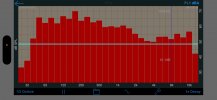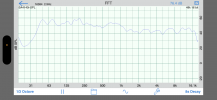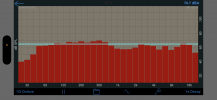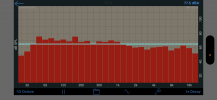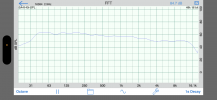I got a pair of KEF LSX ii speakers for my desk and so far I am blown away by the sound that these tiny speakers put out, especially in the lower bass region for jazz. I have not used the custom EQ setup yet because I don't like changing EQ settings without seeing what exactly the setting is doing to the sound. I had an old SA4140i mic lying around that is used with an app called mobiletools. It has RTA and FFT measurements as well as few others features.
Attached are the RTA and FFT measurements I got using a pink noise generator. It has been a few years since I last dabbled in this hobby and I am entirely clueless as to what exactly I am looking at. I guess what I want to know is, with KEF's out of the box settings, how are these LSX ii's looking and what needs to be adjusted? I have a KEF Kube 12b on the way to help fill in the low bass end.
Attached are the RTA and FFT measurements I got using a pink noise generator. It has been a few years since I last dabbled in this hobby and I am entirely clueless as to what exactly I am looking at. I guess what I want to know is, with KEF's out of the box settings, how are these LSX ii's looking and what needs to be adjusted? I have a KEF Kube 12b on the way to help fill in the low bass end.

